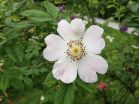(Press-News.org) GALVESTON —Researchers have concluded that providing better access to health care may lead to the overuse of mammograms for women who regularly see a primary care physician and who have a limited life expectancy.
The cautionary note from researchers at the University of Texas Medical Branch at Galveston is that screening women in this category could subject them "to greater risks of physical, emotional and economic suffering."
Dr. Alai Tan, a senior biostatistician in UTMB's Sealy Center on Aging and lead author of the study, said that "there has been little systematic attempt to define guidelines that would help determine when breast cancer screening might not be appropriate or overused.
"The American Cancer Society guidelines on screening, for example, have had no upper age limit," Tan wrote in the study. "This is different from the case with prostate-specific antigen screening, where both the American Cancer Society and the American Urological Association have longstanding guidelines that exclude men with a less than 10-year life expectancy."
The study was published in the June edition of Medical Care, the official journal of the Medical Care Section of the American Public Health Association.
Using data from 2006 through 2009, researchers studied about 5 percent the Medicare claims filed during that period by women whose life expectancy was less than seven years. They further studied where the women lived and whether they had a primary care physician.
In general, the researchers found that the use of mammograms decreases as a woman's life expectancy grows smaller. However, they found that the general downtrend as a woman ages could be offset by better access to health care.
For example, the screening rate for woman with a life expectancy of less than six years who had seen a primary care physician two or fewer times during the three-year period studied was about 20 percent. However, among women who had seen a primary care physician 13 or more times during that period who had a life expectancy of less than four years, the rate was about 34 percent.
The researchers also noted that there is about a four-year difference from when a cancer is diagnosed via screening and when it would be diagnosed clinically for women between 65 to 74. Previous studies have demonstrated that "survival benefits" were not apparent seven to 10 years after a screening.
The study also found that women with a limited life expectancy who lived in an area with greater access to mammography resources, more primary care physicians, mammographic facilities and radiologists, were more likely to be screened.
Mammograms have been heavily promoted for about 25 years and many patients have come to expect that a screening test such as this would be a routine procedure, the researchers wrote. The researchers concluded that life expectancy should be a factor in deciding whether a mammogram is needed.
INFORMATION:
Other authors of the study are UTMB's Director of Biostatistics Yong-Fang Kuo and UTMB's Vice President and Chief Research Officer Dr. James Goodwin.
Funding for the study was provided by the Cancer Prevention Research Institute of Texas and the National Institutes of Health.
The University of Texas Medical Branch
Office of Marketing and Communications
301 University Boulevard, Suite 3.518
Galveston, Texas 77555-0144
http://www.utmb.edu
ABOUT UTMB HEALTH: Texas' first academic health center opened its doors in 1891 and today comprises four health sciences schools, three institutes for advanced study, a research enterprise that includes one of only two national laboratories dedicated to the safe study of infectious threats to human health, and a health system offering a full range of primary and specialized medical services throughout Galveston County and the Texas Gulf Coast region. UTMB Health is a component of the University of Texas System and a member of the Texas Medical Center.
If you need more information, please contact the UTMB Media Hotline at 409-772-6397 or Raul Reyes at 409-747-0794 or rareyes@utmb.edu
Please Note: Our studio now is equipped with a technology that enables us to transmit live or taped HD or SD video over the Internet. For video interviews, contact us at 409-772-6397.
More access to health care may lead to unnecessary mammograms
2014-05-27
ELSE PRESS RELEASES FROM THIS DATE:
Smaller accelerators for particle physics?
2014-05-27
WASHINGTON D.C., May 27, 2014 -- It took every inch of the Large Hadron Collider's 17-mile length to accelerate particles to energies high enough to discover the Higgs boson. Now, imagine an accelerator that could do the same thing in, say, the length of a football field. Or less.
That is the promise of laser-plasma accelerators, which use lasers instead of high-power radio-frequency waves to energize electrons in very short distances. Scientists have grappled with building these devices for two decades, and a new theoretical study predicts that this may be easier than ...
New epilepsy treatment offers 'on demand' seizure suppression
2014-05-27
A new treatment for drug-resistant epilepsy with the potential to suppress seizures 'on demand' with a pill, similar to how you might take painkillers when you feel a headache coming on, has been developed by UCL (University College London) researchers funded by the Wellcome Trust.
The treatment, described in Nature Communications, combines genetic and chemical approaches to suppress seizures without disrupting normal brain function. The technique was demonstrated in rodents but in future we could see people controlling seizures on-demand with a simple pill.
Epilepsy ...
Light-colored butterflies and dragonflies thriving as European climate warms
2014-05-27
Butterflies and dragonflies with lighter colours are out-competing darker-coloured insects in the face of climate change.
In a new study published in Nature Communications, scientists from Imperial College London, Philipps-University Marburg and University of Copenhagen have shown that as the climate warms across Europe, communities of butterflies and dragonflies consist of more lighter coloured species. Darker coloured species are retreating northwards to cooler areas, but lighter coloured species are also moving their geographical range north as Europe gets warmer.
For ...
Climate warming favors light-colored insects in Europe
2014-05-27
Climate changeButterflies and dragonflies with a lighter shade of colour do better in warmer areas of Europe. This gives them a competitive advantage over the darker insects in the face of climate change. Changes in Europe's insect assemblages due to warming can already be seen for dragonflies, shows a study recently published in Nature Communications.
"When studying biodiversity, we lack general rules about why certain species occur where they do. With this research we've been able to show that butterfly and dragonfly species across Europe are distributed according to ...
Why are girl babies winning in the battle for survival?
2014-05-27
Sexual inequality between boys and girls starts as early as in the mother's womb – but how and why this occurs could be a key to preventing higher rates of preterm birth, stillbirth and neonatal death among boys.
A team from the University of Adelaide's Robinson Research Institute has been studying the underlying genetic and developmental reasons why male babies generally have worse outcomes than females, with significantly increased rates of pregnancy complications and poor health outcomes for males.
The results - published today in the journal Molecular Human Reproduction ...
Medical mechanics
2014-05-27
Removing a malignant tumor from the head of the pancreas is a risky and demanding operation. The surgeon must carefully navigate around the stomach, the gallbladder, the bile duct, lymph nodes, and several high-pressure blood vessels.
But an inexpensive device designed by Harvard engineering students and a surgeon at Beth Israel Deaconess Medical Center offers surgeons a confident grip throughout the delicate procedure. The gentle grasper, equipped with rubberized pressure sensors, has three slender fingers that can slip through a very small incision and tease cancerous ...
Just look, but don't touch: EMA terms of use for clinical study data are impracticable
2014-05-27
The European Medicines Agency (EMA) receives comprehensive clinical study data from drug manufacturers. These data form the basis for the decision on the approval of new drugs. To make this information available to researchers and decision-makers, EMA issued a draft policy in 2013 for the publication of clinical study data, in which extensive data transparency was planned.
Besides other interested parties, the German Institute for Quality and Efficiency in Health Care (IQWiG) was intensely involved in the subsequent consultations. The result of these consultations is ...
The future of sweet cherry in Australia
2014-05-27
AUSTRALIA -- Predicted variations in global climates have fruit producers trying to determine which crops are best suited to weathering future temperature changes. Extreme high-temperature events are expected to become more frequent, and predictive models suggest that the global mean surface air temperature will rise by as much as two degrees by the middle of the 21st century. Higher temperatures could have an impact on the duration of critical "winter chill" periods needed for successful fruit production, potentially altering growing strategies. According to the authors ...
Differences in phenolic makeup of indigenous rose species and modern cultivars
2014-05-27
LJUBLJANA, SLOVENIA – The leaves and petals of roses are valued for their medicinal and aesthetic uses around the world. A new study identified specific phenolic compounds found in the petals of indigenous rose species and compared them with the phenolic profiles of modern rose cultivars to determine differences in the makeup of roses traditionally used for medicinal purposes and those varieties cherished for aesthetic qualities. According to the results, distinct differences exist in the distribution of leaf phenolic compounds, especially between indigenous rose species ...
Researchers identify a new suppressor of breast metastasis to the lung
2014-05-27
A study published today in EMBO Molecular Medicine reveals that the loss of function of the gene RARRES3 in breast cancer cells promotes metastasis to the lung.
The research, headed by Roger Gomis, ICREA Professor at the Institute for Research in Biomedicine (IRB Barcelona), is the result of a collaboration between two IRB labs and Joan Massagué, at the Memorial Sloan Kettering Cancer Center in New York.
The scientists demonstrate that RARRES3 is suppressed in estrogen receptor-negative (ER-) breast cancer tumours, thus stimulating the later invasion of the cancer cells ...



